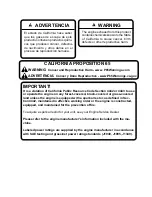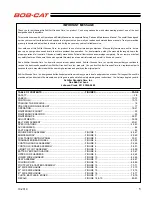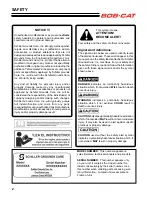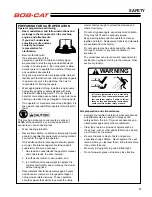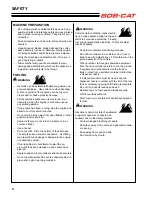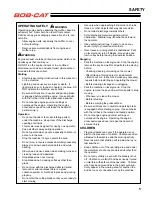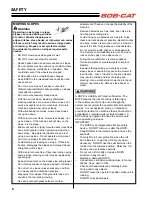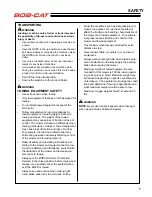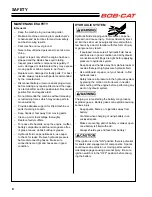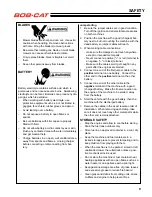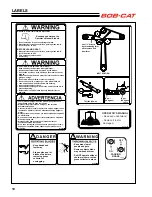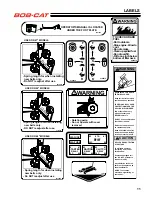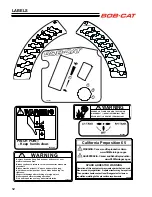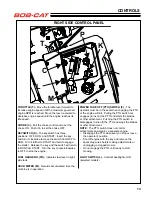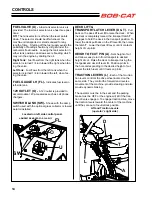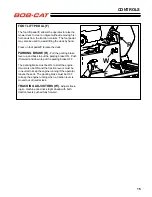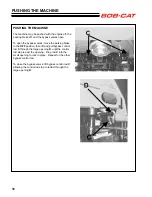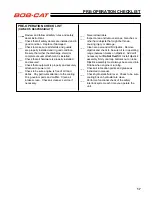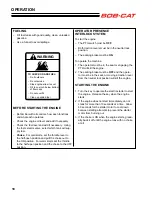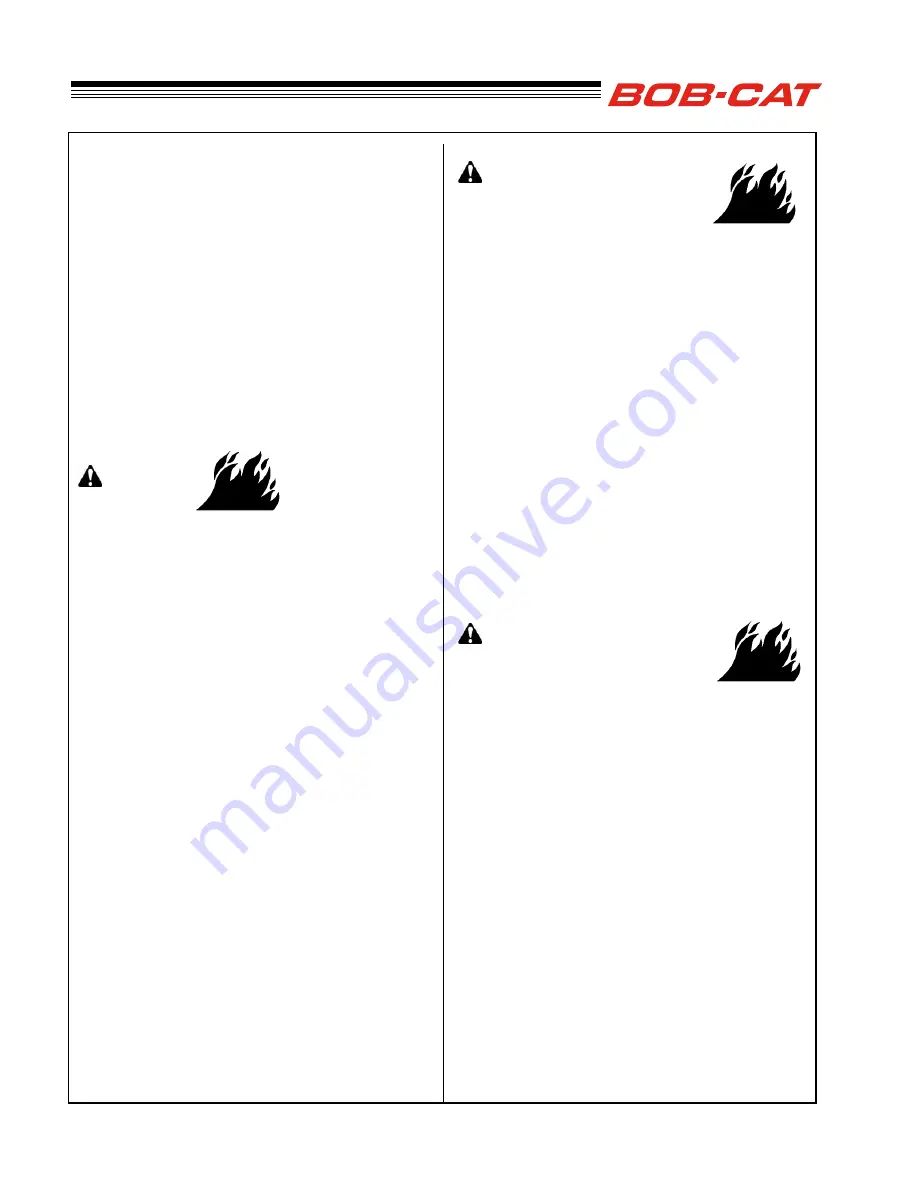
4
SAFETY
MACHINE PREPARATION
– Do not tamper with or defeat safety devices. Keep
guards, shields and interlock safety devices in place
and in proper working condition. They are for your
protection.
– Keep all fasteners such as nuts, bolts and pins well
secured.
– Visually inspect blades, blade bolts and the cutter-
deck assembly for wear or damage. Replace worn
or damaged blades and bolts to preserve balance.
– Verify that machine and attachments, if any, are in
good operating condition.
– Grass catcher components are subject to wear,
damage and deterioration which could expose mov-
ing parts or allow objects to be thrown.
FUELING
– Gasoline can be extremely flammable; gasoline va
-
pors are explosive. Use extra care when handling.
A fire or explosion from gasoline can burn you or
others and /or cause property damage.
– Fill the fuel tank outdoors on level ground, in an
open area, when the engine is cold and wipe up
any spilled gasoline.
– If the engine has been running, stop the engine and
allow to cool for several minutes.
– Do not smoke, stay away from open flames or other
possible ignition sources.
– Refuel outdoors, do not refuel in indoors or in an
enclosed trailer.
– Use a funnel.
– Do not overfill. Fill to the bottom of the filler neck.
The empty space allows for expansion. Overfilling
may result in fuel leakage or damage to the engine
or emissions system.
– If fuel is spilled, do not attempt to start the en-
gine until the spill is cleaned up and vapors have
cleared.
– Replace caps on fuel containers and tanks securely.
– Do not operate without the entire exhaust system in
place and in good working condition.
WARNING
Under certain conditions, static electric-
ity can cause sparks during fueling and
start fires or cause explosions. Flowing
fuel can generate static electricity. To prevent static
electricity sparks:
– Keep fuel containers electrically grounded.
–
Do not fill containers in a vehicle or on a truck or
trailer bed with a plastic liner. Fill containers on the
ground away from the vehicle.
– When practical, remove gas powered equipment
from the truck or trailer and refuel it on the ground.
If equipment must be refueled on the truck or
trailer, refuel from a portable container rather than
a dispenser nozzle.
– If a dispenser nozzle must be used, keep the
dispenser nozzle in contact with the rim of the fuel
tank or container opening until fueling is complete.
Do not use a nozzle lock-open device
– Replace caps on fuel cans and tanks securely.
– Fill the fuel tank outdoors.
–
Store fuel only in containers specifically designed
for fuel.
Gasoline is harmful or fatal if swallowed.
Long-term exposure to vapors has
caused caner in laboratory animals.
– Avoid prolonged breathing of vapors.
– Keep face away from nozzle and gas tank/contain-
er opening.
– Keep away from eyes and skin.
– Do not siphon by mouth.
WARNING
WARNING
Summary of Contents for 9995010
Page 47: ...45 PARTS SECTION PARTS SECTION ...
Page 50: ...48 FIGURE 2 BUMPER WRAP 4 3 6 2 7 8 9 10 1 5 5 ...
Page 70: ...68 FIGURE 12 FOLDING ROPS 10 7 5 2 6 13 1 14 1 11 3 1 4 9 8 7 5 3 2 9 4 6 12 15 15 ...
Page 82: ...80 FIGURE 18 DECALS 9 7 17 6 10 13 12 11 1 5 4 6 8 2 3 6 6 16 18 14 20 19 15 ...
Page 84: ...82 7 6 5 4 3 2 1 8 8 4 10 11 12 6 9 13 FIGURE 19 DECALS ...


